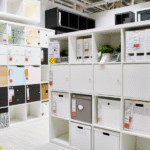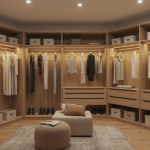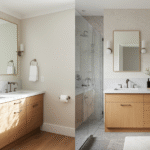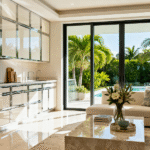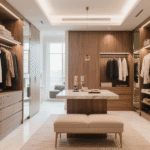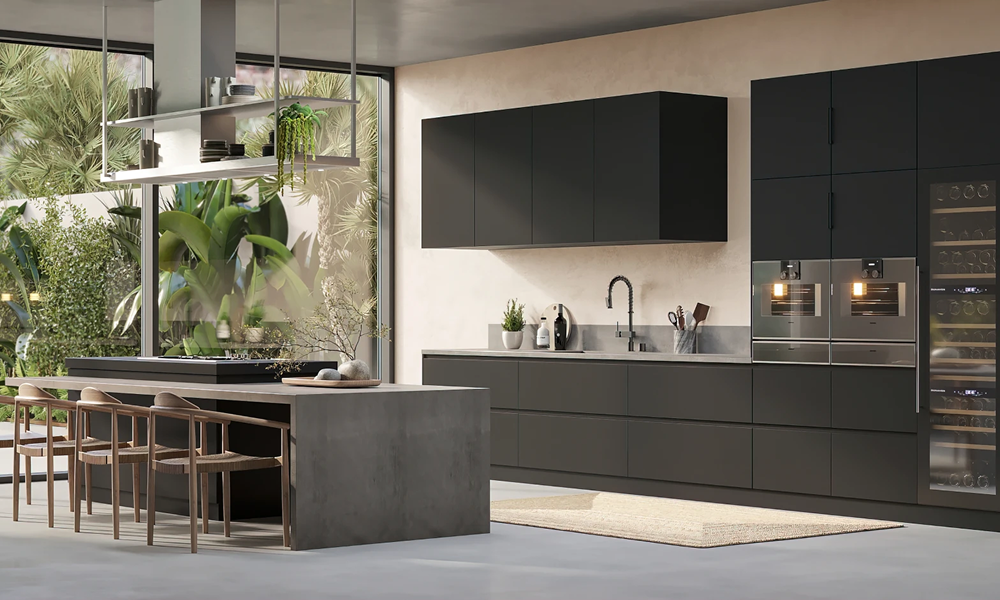
How to Choose the Perfect Custom Cabinets for Your Kitchen
Sep 03, 2025
One of the most crucial decisions you can make when remodeling your kitchen is selecting custom cabinets. Compared to off-the-shelf options, custom cabinets offer the opportunity to create a culinary space that best suits your lifestyle, aesthetic preferences, and practical needs. But having unlimited possibilities comes with the challenge of making the right decisions.
When you have to choose among wood species, door styles, finishes, hardware, and storage solutions, the process can turn overwhelming. Every decision affects not only how your kitchen looks but also its long-term value. Understanding the key considerations that influence the choice of custom kitchen cabinets will enable you to approach this process with confidence and create a kitchen that you will enjoy using for years to come.
Assessing Your Needs and Lifestyle
Before delving into the design details, be honest with yourself about how you use your kitchen and how you can make the most significant difference to your everyday life.
Know Your Cooking and Storage Habits
Reflect on how often you cook and how you approach the cooking process. Do you cook fancy food that takes a lot of pots and pans, or do you cook fast and straightforward food? Do you bake frequently and need a dedicated space to store mixing bowls and specialized equipment? Do you host parties, and do you require a room to serve items and additional dishes?
Dishes and cookware are not the only items that you require to store. Consider small appliances, pantry items, cleaning supplies, and even things like school papers or mail that often end up in the kitchen. List all the things that you store in your kitchen now, and what is missing in your current arrangement, and inform your cabinetry manufacturer, who can offer you the best options.

Assess Your Kitchen’s Existing Pain Points
Take a tour around your existing kitchen and see what annoys you the most. The most common problems encountered are a lack of counter space, unreachable upper cabinets, cluttered lower cabinets where items are often lost in the back, a shortage of custom storage areas, such as for spices or a cutting board, and an inefficient flow of activity between the sink, stove, and refrigerator.
Note down these points of pain, as they should be the top priority in your custom cabinet design. A custom kitchen reduces such frustrations and helps make cooking and cleaning up more pleasant.
Planning for Future Needs
Consider how your needs will evolve and discuss this with your cabinetry manufacturer before ordering your custom cabinet. Do you intend to stay with age and thus may need shorter counters or neatly accessible storage? Are there young kids at home who will need to eat and get snacks on time? Would you develop new interests, such as breadmaking or wine collecting, which might require specialized storage?
Setting Your Budget and Timeline
Custom cabinets are a significant investment, and it is best to develop a realistic budget early to help make choices and avoid expensive modifications down the line.
Knowledge of Investment Range
Depending on the location, intricacy, and materials used, bespoke cabinet costs might vary considerably. The design, materials, construction, and installation are all taken into consideration when calculating the cost.
As a point of comparison, a standard 10×12 kitchen needs 25–30 linear feet of cabinetry, which adds up to $12,500–$45,000 or more. It is a substantial investment, and because of their longevity, adaptability, and capacity to raise a home’s value, bespoke cabinets usually offer superior value over time.
Factors That Affect Pricing
The price of custom cabinets is mostly determined by a number of factors. The type of wood is a crucial factor, and native hardwoods like oak and maple are usually less expensive to purchase than exotic species like cherry or walnut. The cost of your door is also influenced by its style; doors with a rich, raised panel and ornate molding design are more expensive than basic, flat-panel doors.
Finish complexity is another cost factor; a straightforward painted or stained finish is less expensive than multi-step finishes that involve hand rubbing, distressing, or glazing. Your overall investment will also depend on the amount and type of storage you have, including storage accessories such as pull-out drawers, lazy susans, and personalized organizers.
Planning Your Timeline
Custom cabinets can be finished in 8–12 weeks once the design is finalized. However, this timeline could be prolonged based on the complexity of the project or the season. Depending on the intricacy of your project and how quickly you make decisions, the cabinet makers might also need a design development time, which could last anywhere from two to four weeks.
A kitchen’s installation typically takes three to five days, although the duration can vary depending on the project’s size and complexity. Your daily schedule will be somewhat disrupted by the installation, and you may need to make some temporary arrangements in the kitchen.

Choosing Materials and Construction
The long-term function, beauty, and durability of your custom cabinets will all depend on the materials and construction techniques employed.
Wood Species Selection
Due to their inherent beauty and durability, hardwoods are the ideal material for custom cabinetry. Popular options include cherry, appreciated for its rich color that deepens with age; walnut, recognized for its dramatic grain and chocolate brown tones; oak, noted for its strong grain pattern and classic appeal; and maple, which has a clean, uniform grain and takes stain well.
Every type of wood has distinct qualities that influence both look and functionality. Oak’s distinct grain pattern makes it perfect for stained finishes when you want to bring out the wood’s inherent character, while maple’s smooth, even grain makes it great for painted finishes. Premium options like cherry and walnut are more expensive but provide unparalleled natural beauty.
Construction Quality Indicators
The lifetime and functionality of your cabinets will be determined by the construction techniques used. In contrast to manufactured alternatives, solid wood face frames offer greater strength and longevity. Drawers with dovetail joints are made with high-quality craftsmanship and are guaranteed to last for many years.
Cabinet boxes must be made of high-quality plywood, not particle board or MDF. Plywood offers superior strength, moisture resistance, and screw-holding power. The cabinet box materials are also important in terms of their thickness, with 3/4-inch plywood being the best compared to the thinner ones.
Hardware and Accessories
Quality hardware is needed to operate smoothly and last long. Custom cabinetry often features soft-close hinges and drawer slides, providing a high-end feel and eliminating the slamming that can damage cabinets over time. Full-extension drawer slides give full access to drawer contents and can accommodate heavier weights as compared to partial-extension ones.
Think about special storage accessories that can radically enhance functionality. Pull-out shelves help open up deep cabinets, lazy Susans make the corner cabinets work more efficiently, and custom drawer organizers help keep utensils and other small items in their designated places. Although these accessories increase the cost, they are of great use in your kitchen.
Design and Style Considerations
Your custom cabinet style must not only match the architecture of your home but also represent your own sense of aesthetic values, while being classic enough not to feel dated.
Door Styles and Their Impact
One of the most noticeable design features is the cabinet door style, which has a profound influence on the look of your whole kitchen. Simple, clean lines and a recessed center panel make shaker-style doors fit well in both traditional and modern environments, and they have been popular over the decades.
Flat-panel or slab doors are smooth and modern, which suit the modern homes effectively. The lines on these doors are horizontal, giving them a sleek appearance that is easy to maintain and clean. Raised-panel doors with ornamental moldings and profiles are more formal and traditional, offering a classic look that complements traditional homes.
Take into account your previous door and the style you need for the current one. Although fashionable patterns may be attractive now, antique designs, such as shakers or plain raised-panel doors, have a higher chance of remaining attractive over many decades.
Color and Finish Selection
The choice of color is theatrical and influences the mood of your kitchen and its size. Light and white colors create the impression that spaces are bigger and brighter, whereas darker colors make the spaces more intimate and sophisticated. Consider the natural lighting, size, and overall appearance of your kitchen when selecting colors.
The natural beauty of the wood grain is represented in stained finishes and can be more receptive to wear and scratches. Common stain colors are natural maple, medium oak, and deep cherry. Painted finishes offer an inexhaustible range of colors and produce a clean, uniform look, although they can wear more easily than stained finishes.
Balancing Trends with Timelessness
Remember that custom cabinets are an investment that will be made over time, despite the temptation to incorporate the newest style trends. Principal components, like door type and wood species, should emphasize classic characteristics. Trends can be incorporated through easily interchangeable pieces, such as accessories, paint colors, and hardware.
The use of mixed materials (wood mixed with metal or glass), two-tone color schemes, and built-in lighting are the current trends that have staying power. These are the elements that can give your kitchen an eye-catching look without making it appear dated over time.
Working with the Cabinet Masters
The success of your custom cabinet project depends mainly on the professionals you choose to work with.
Selecting a Cabinet Maker
Research potential cabinet manufacturers to the fullest extent possible by looking through their portfolios, reading customer reviews, and visiting completed projects of potential candidates. Find manufacturers that specialize in the style and level of quality you are searching for, and ensure they have worked on projects of a similar scale and complexity to yours.
Inquire about their design, manufacturing schedule, and warranty. An authorized cabinet maker should also provide comprehensive drawings or 3D images of your project and be prepared to address questions related to the materials and construction techniques used.
The Design Process
The starting point of a good design process is a comprehensive consultation, where the cabinet maker will gain insight into your needs, preferences, and budget. They are supposed to take space measurements and discuss with you how you use your kitchen to inform the design.
We will be able to send you preliminary designs within one to two weeks after the first consultation, and then revise them based on your feedback. The final drawing will display the detailed plans, including cabinet dimensions, door styles, hardware placement, and any additional features or items.
Communication and Project Management
Effective communication is a prerequisite for the project. Exchange requirements on periodic reports on production progress and installation schedule with any other contractors on your project.
A skilled cabinet maker should provide an elaborate schedule and update you on any delays or variations that may occur. They also need to liaise with other trades, such as plumbers and electricians, to ensure the correct installation of appliances and fittings.
Conclusion: Creating Your Perfect Kitchen
The selection of custom cabinets is a process that should be taken into consideration in light of your requirements, preferences, and financial possibilities. Spending time evaluating your lifestyle and considering what you can do with materials, building, and working with seasoned professionals will enable you to create a kitchen that will best serve your family for decades to come.
It is important to remember that custom cabinets mean an investment in the value of your home and your everyday living standards. As complicated as the process might appear, the outcome is an ideal kitchen that is customized to meet your needs and preferences and is well worth the effort. Go slow, make inquiries, and don’t hesitate to invest in high-quality materials and construction that will prove to be long-lasting.
Ready to revamp your culinary space with custom cabinets? At Maple Haus USA, we can help you get the perfect cabinets designed for your space. Contact us today!
